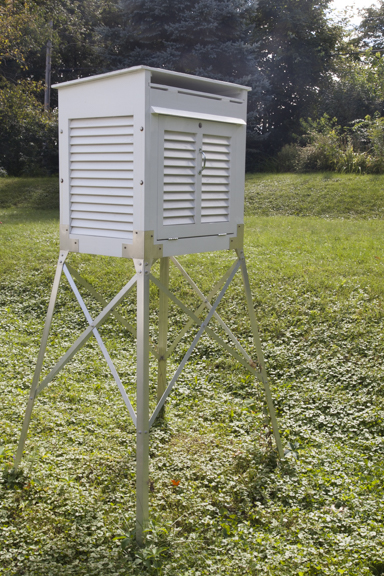This upper air chart shows the flow, temperature, dew point depression, 500 mb heights, and centers of high and low pressure, aloft at approximately 18,000 feet. It is approximate because this map shows the height above sea level of the 500 millibar pressure surface...how high above sea level is the 500 millibar pressure surface located. The height is determined by radiosondes - balloons launched at 7:00 p.m. CDT this evening. One of the instruments on the payload package is a barometer - a device that measures air pressure. The air pressure is transmitted back to a ground station along with other data measured by the instruments.
The thin solid dark lines are drawn along lines of equal pressure - 500 millibars. Each line is either 60 meters higher or lower than the next line. Generally speaking the lines in the north are at a lower altitude than ines to the south - changing by 60 meters higher or lower from an adjacent line.
The closer the lines are together the stronger the winds are at this level. For example the winds aloft, at 500 millibars, are stronger in the northwest corner of the United States than winds over the southern half of the U.S. (There are no lines over the southern U.S., while the lines are close together over the northwestern U.S. One thing we can infer from a map like this is the the flow aloft over the northern U.S. is stronger than over the south with the strongest winds in the U.S. at this height are over the northwest.
Disturbances in the flow will travel generally west to east across the northern U.S. this week. There is plenty of moisture and warm air blanketing the southern U.S. east of the Rockies and this air will move northward in advance of every disturbance. This means we can expect scattered thunderstorms with most of these disturbances.
This situation is sometimes called the Ring of Fire because a "ring" of thunderstorms develops in the flow on the north side of warm air aloft. If the air aloft is too warm it suppresses thunderstorm development. Cool air aloft associated with the disturbances in the northern flow will help make the air unstable and trigger thunderstorms. The storms create the so-called "Ring of Fire." Watch for thunderstorms this week to form in this flow over the northern United States.
























